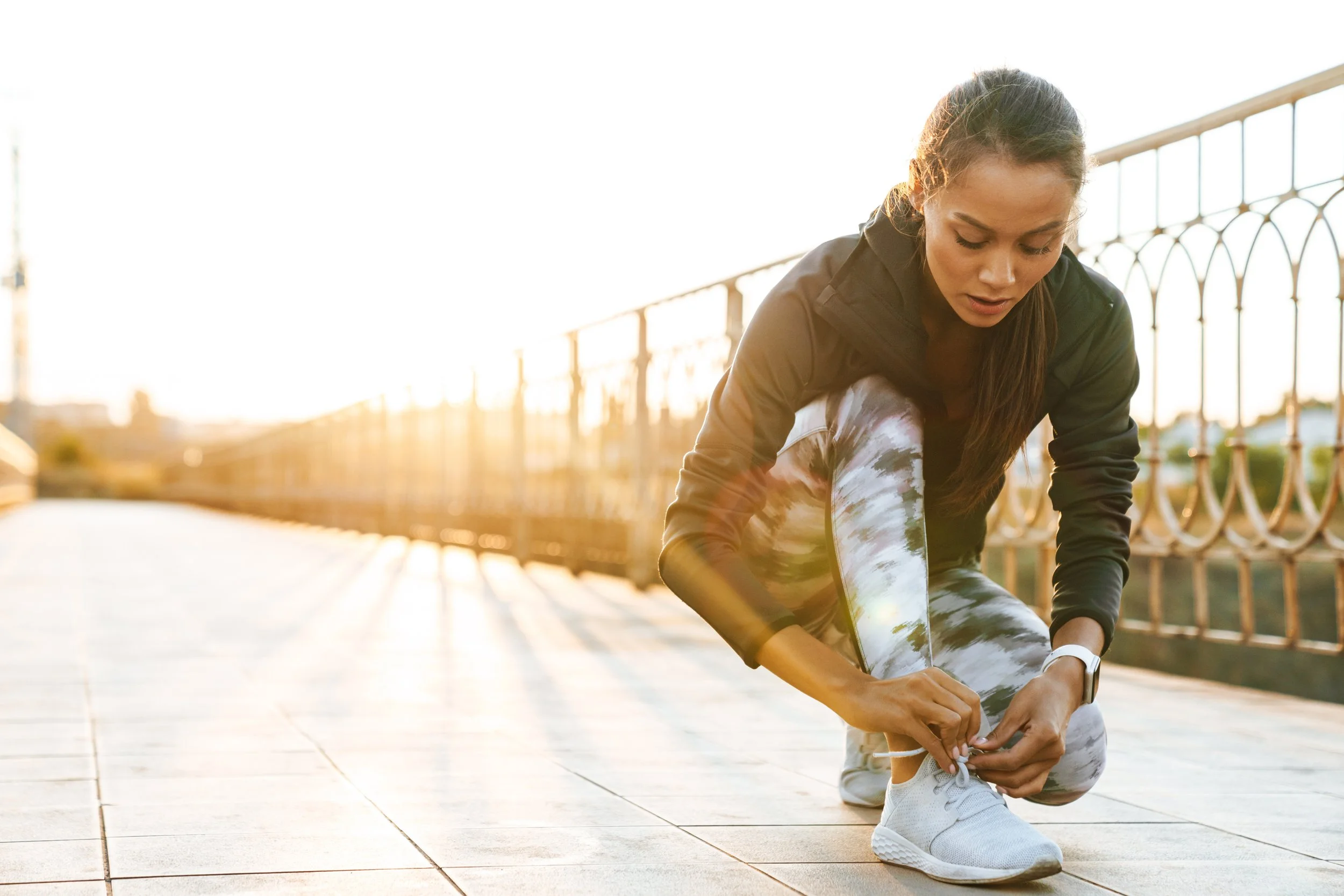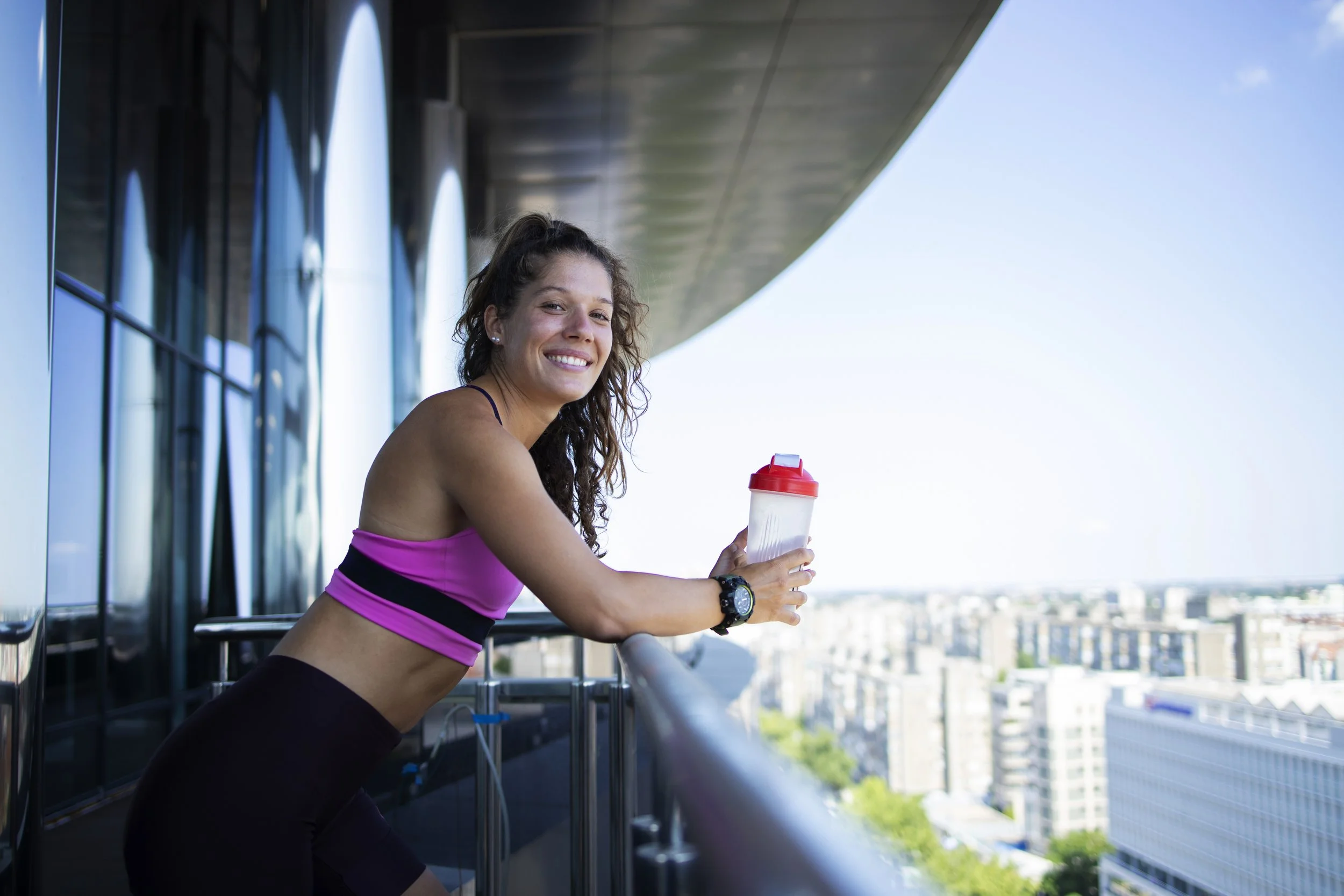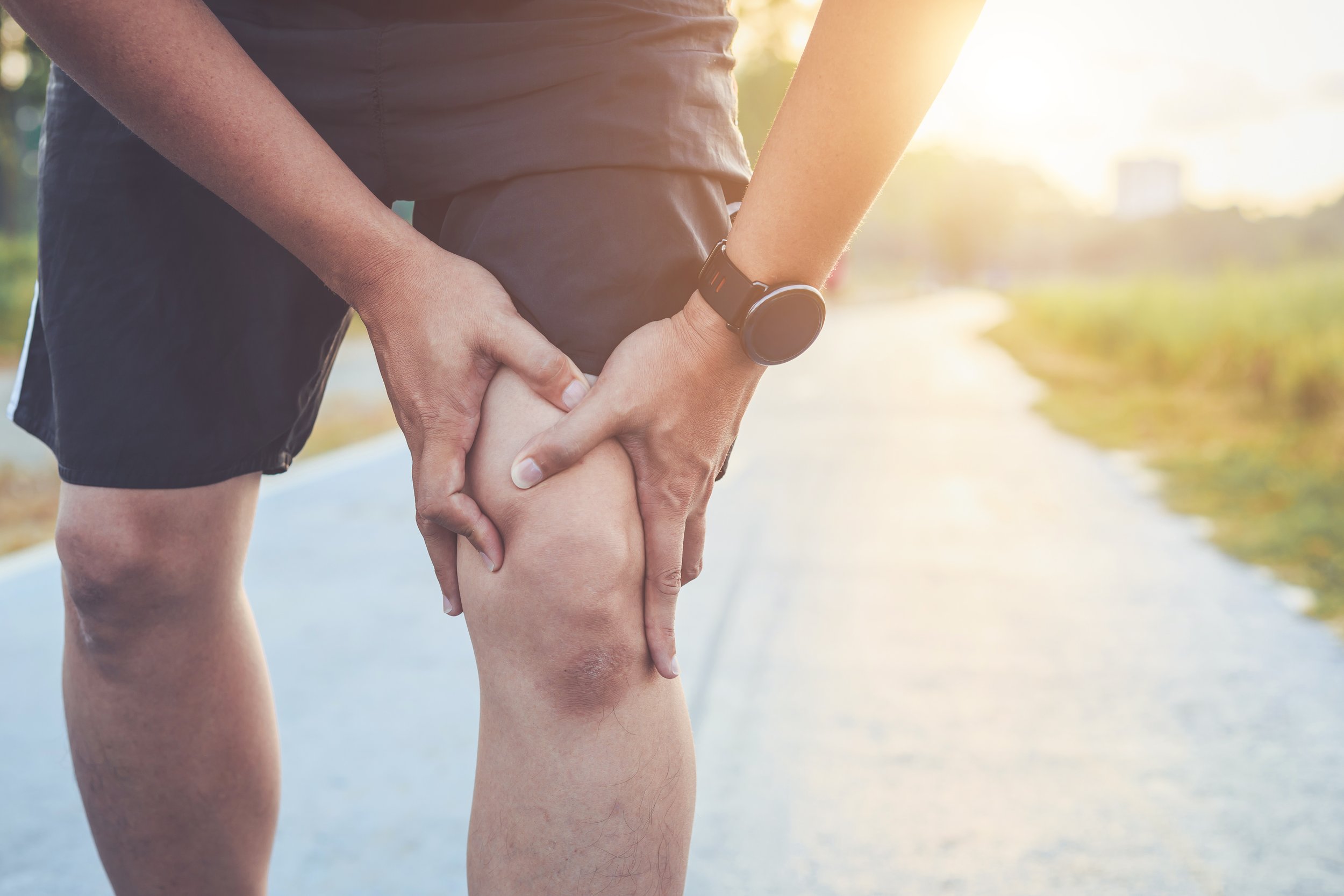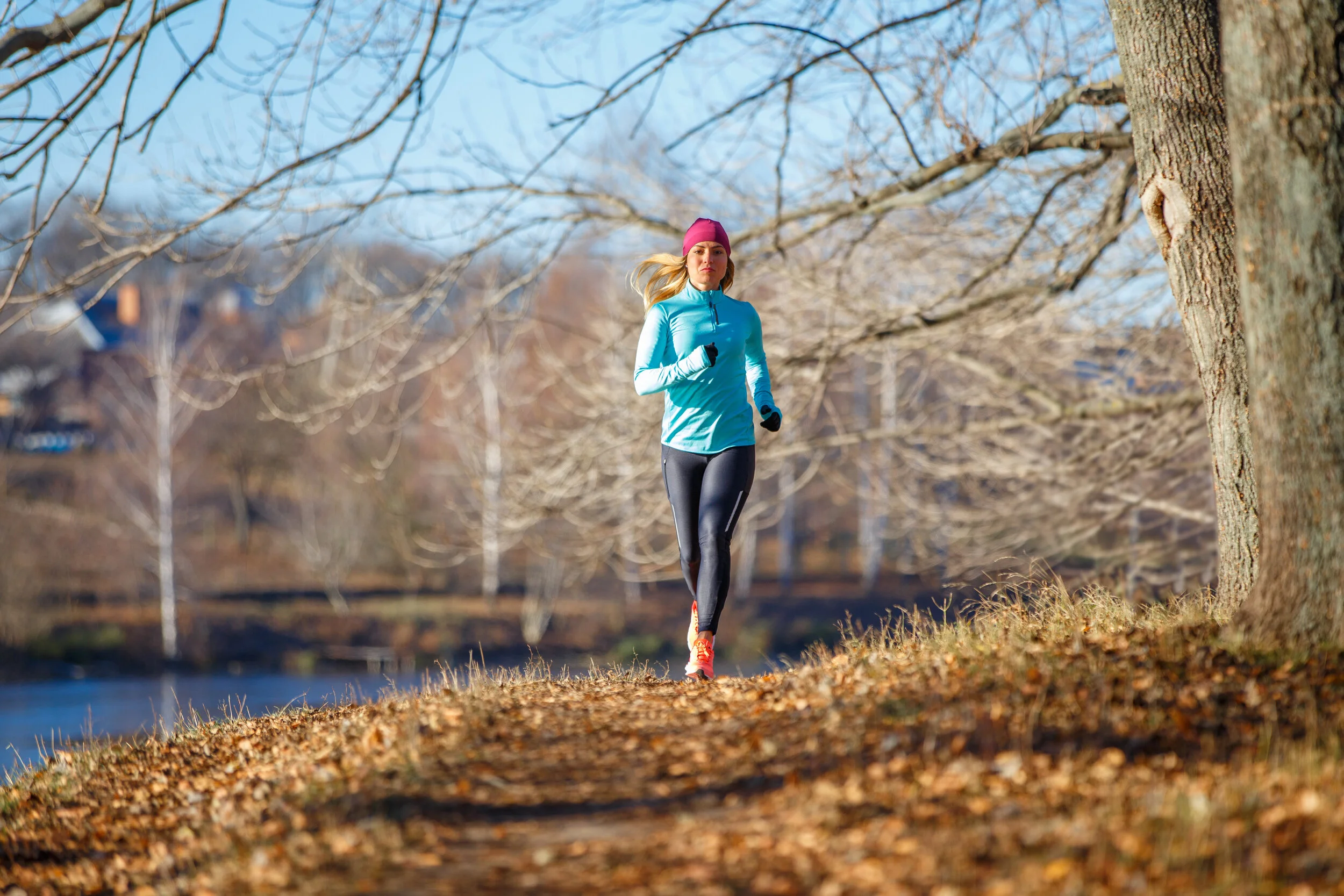Falls have become the leading cause of injury for older adults. 27.5% of individuals 65 years and older have reported at least one fall in the past year.1 These falls can lead to serious injuries that involve broken bones or head trauma. Each year over 800,000 people in this age group are hospitalized due to a fall injury and 95% of hip fractures are caused by a fall.2 However, falls are preventable. Working to recognize the modifiable risk factors in our lives can help reduce the chance of fall and injury.
ACL Series Part 2: Surgery
Right now, I am 1.5 years post ACL surgery, but 3.5 years post ACL injury. I will be recalling my experience starting at the time of injury all the way through my individual Physical Therapy experience. This will be a multi-part series that tells my story, plus various research facts and personal details along the way.
Hip Osteoarthritis
Osteoarthritis is one of the most common orthopedic conditions among physical therapy patients. Osteoarthritis (OA) describes degeneration of cartilage and, eventually, bone in a moving joint. The development of OA can be the result of a previous injury or specific joint condition but is most often idiopathic in nature.1 Knees, hips, and thumbs are notorious for developing OA as a result of the large, repetitive forces these joints have to absorb over the course of a lifetime.2 The term OA refers to a wide spectrum of joint degeneration and can sometimes be used to describe a joint that appears damaged on an X-ray but doesn’t hurt or cause a decline in function (asymptomatic osteoarthritis). Various studies of the general population in the U.S. estimate that 20-28% of adults aged 60+ have evidence of hip OA on an X-ray, yet only 4-10% of this population have pain or poor function due to hip OA.3,4 Although an X-ray may show hip joint degenerative changes, treatment generally does not occur until someone begins to have symptoms.
Exercise After COVID
What to know about getting back into activity following a diagnosis of COVID
With the most recent spread of Covid across the country, The Journal of the American Medical Association has recently released guidelines on the safest way to return to exercise following all levels of Covid infection. As physical therapists, we are responsible to help our patients return to safe exercise, and should be taking responsibility for returning our patients safely to exercise following Covid. Here are some things to consider for best practice when returning to activity following a COVID diagnosis depending on severity of symptoms.
ACL Series Part 1: Pre-Surgery
Right now, I am 1.5 years post ACL surgery, but 3.5 years post ACL injury. I will be recalling my experience starting at the time of injury all the way through my individual Physical Therapy experience. This will be a multi-part series that tells my story, plus various research facts and personal details along the way.
Early Sports Specialization
Early Sport Specialization (ESS)
Before I explain why, lets briefly get on the same page with a definition for Early Sport Specialization (ESS). Typically ESS refers to year-round (for at least 8 months) intensive training or competition in an organized sport by young athletes (<12 years of age) while excluding all other sports.
Injury Risk
One of the most studied problems with early specialization is increased injury risk compared to peers. The biggest factor contributing to this increased risk was participation in any individual sport for greater than 8 months of the year3. This is especially true in baseball pitchers where pitching for more than 8 months per year was correlated with a 500% increase in risk for Tommy John surgery. (I discuss this and other risk factors for UCL injury in my blog “Minimizing the Risk for UCL Injuries in Throwers” *hyperlink). Across all sports there is an increased injury risk of 1.81 times in highly specialized athletes compared to their multi-sport peers5.
Knee Osteoarthritis in Runners?
Does Running Cause Knee Arthritis?
In my practice, I frequently have the opportunity to interact with runners. Running is a repetitive activity that certainly has injury risk. I do frequently come across runners and people who have quit running saying something like: “I know running will give me arthritis, but I just love to do it.” or “I quit running because I was afraid of developing arthritis in my knees.” Common thought continues to be that the impact of running does lead to arthritis.
Examining the Evidence
Do our perceptions meet reality? Let’s look at the research to find out.
Raking Leaves
The annual prevalence of patellofemoral pain in the general population has been found to be over 22%! Anterior knee pain is not just a problem for young adults and adolescents. In this article, I’d like to provide you with several key tests you can use to help determine if you may have patellofemoral pain and then outline how a physical therapist can successfully help you recover.
Patellofemoral pain is largely a diagnosis of exclusion. There can be many causes of knee pain and it is important for your healthcare provider to properly assess your individual condition. Many individuals have anterior knee pain with prolonged sitting with flexed knees.
There are three common provocative diagnostic tests that are most closely correlated with patellofemoral joint pain:
Squatting
Climbing Stairs
Eccentric Step-Down Test
Research has linked several key factors that may contribute to an individual developing patellofemoral pain. These factors are not present in everybody who has symptoms, but there are often impairments in one or more of these areas found during a physical therapy exam.
Patellofemoral Joint
The annual prevalence of patellofemoral pain in the general population has been found to be over 22%! Anterior knee pain is not just a problem for young adults and adolescents. In this article, I’d like to provide you with several key tests you can use to help determine if you may have patellofemoral pain and then outline how a physical therapist can successfully help you recover.
Patellofemoral pain is largely a diagnosis of exclusion. There can be many causes of knee pain and it is important for your healthcare provider to properly assess your individual condition. Many individuals have anterior knee pain with prolonged sitting with flexed knees.
There are three common provocative diagnostic tests that are most closely correlated with patellofemoral joint pain:
Squatting
Climbing Stairs
Eccentric Step-Down Test
Research has linked several key factors that may contribute to an individual developing patellofemoral pain. These factors are not present in everybody who has symptoms, but there are often impairments in one or more of these areas found during a physical therapy exam.
Pickleball
To learn more about pickleball and shoulder injuries, I decided to ask a local, avid pickleballer who also happens to be an expert shoulder surgeon, Dr. Samuel Koo. Dr. Koo practices at ProOrtho in Kirkland, WA where he specializes in the prevention, diagnosis, and treatment of a variety of shoulder injuries. When Dr. Koo isn’t helping the community with their shoulder injuries, you can often find him on a nearby pickleball court. Dr. Koo first found pickleball about 3 years ago after he was introduced to the game by a friend. His current pickleball addiction is fueled by his history of playing tennis and ping pong.
When asked to compare tennis and pickleball, Dr. Koo says “The biggest difference between pickleball and tennis is that tennis places a premium on the overhead shot—mainly serves and overheads at the net—while pickleball is mostly a game played below your waist.” Given the underhand nature of the game of pickleball, one would expect a lower occurrence of shoulder injuries than in tennis where overhand serving is a major component of the sport.
If you have ever played or watched a game of pickleball, this distinct difference is easy to appreciate. The shorter paddle, slower ball speed, lower net, and smaller court does not place the same demands on the shoulder, or body in general, as in tennis. With the shoulder moving through lower, quick paddle swings near the body, there tends to be less demand into the end ranges of shoulder motion which can reduce the stress on muscles and ligaments surrounding the shoulder joint. Conversely, when the arm quickly accelerates and decelerates through an overhead swing, there are greater demands on the dynamic stability of the shoulder. In pickleball, this type of racquet activity is less common.
Work From Home
What kind of office chair should I get?
With work from home here to stay, patients are asking this question more than ever. The kitchen chair or couch has lost it’s novelty long ago, and your neck and back are telling you it is time. Looking at how patients are sitting in chairs throughout my career, I have noticed common pitfalls in office chair buying. In this blog I’ll share three things that are often overlooked when shopping for a chair.
The seat pan: This is the length of the seat from back to front. If this is too long, the patient ends up perching on the edge of the chair to avoid the back of the knees getting compressed. To test if it is too long, see if you can fit 4 fingers between the chair and the back of your knee. If there isn’t much room for your fingers, it is too long. To avoid this problem, you can look for a chair with adjustable seat depth.
Adjustable lumbar support: Very often, the curve in the chair does not line up with the inward curve of the lower back. Well positioned lumbar support is important to adequately support the spine when you are sitting. There are different mechanisms for this, such as the backrest sliding up and down.
Try out your chair in person before you buy. It is possible that your thighs are long enough and your back is curved just right so that you only need basic adjustability. But most of us don’t match up that well, so looking for these extra features could save you the headache and pain in the butt, literally. For more tips on seating, computer and desk ergonomics, visit your Lake Washington Physical Therapy clinic! Or, come by and see what office chairs we landed on at our new location in West Seattle. #Ducky’s #local business
Laura Bouma, PT, DPT, OCS, CMPT
Protecting Pitchers Elbows
Minimizing the Risk for UCL Injuries in Throwers
The Biomechanics of the baseball throw:
Baseball fans thrive on interesting facts and statistics, but out of all of these facts, the science behind throwing a baseball has to be the most fascinating. The way that an elite athlete’s body can act as a coiled spring, transmitting the necessary forces to turn a baseball into an eye-blur is truly awe-inspiring. During the throw the elbow functions as a hinge joint, going through rapid extension at about 2400°/s for a professional pitcher. (Which is the equivalent of saying that in 1 second the arm could whip around 360° nearly 7 times). Accelerating to this incredible speed places a force on the Ulnar Collateral Ligament (UCL) of your elbow reaching 64Nm (nearly 50lbs).4 Not surprisingly, there is some fallout over time due to the transmission of this high force.
Will Tiger Return?
Will Tiger Woods Return to Golf?
Tiger Woods has undergone several surgeries after his most recent accident. What does this mean to his return to daily life and potentially the course?
On February 23, 2021 golf made national news after Tiger Woods got into a single car accident while driving to the golf tournament that he was hosting in Pacific Palisades, California. He was extracted from the car and headed straight into surgery sending the golf world into a frenzy. Would the superstar return to golf? How long until we get the “Big Cat” back on tour? Will he even come back after recovery? Although most of those questions are up in the air, lets take a dive into the injuries that Tiger sustained to get a better understanding of the tough road ahead.
LWPT Redmond: Shawn Brenneman
Medial Tibial Stress Syndrome
What is Medial Tibial Stress Syndrome?
Medial tibial stress syndrome (MTSS), also known as “shin splints”,
is an overuse injury that causes pain at the front of the shin with exercise. MTSS is an early stress injury along a spectrum that includes tibial stress fractures. It is most common in runners, jumping athletes, and military personnel-- individuals which undergo recurrent impact exercise.
Differential diagnosis of MTSS requires clinicians to distinguish MTSS from tibial stress fractures, exertional compartment syndrome, peripheral vascular disease or popliteal artery entrapment, and other less common causes of exertional pain in the lower extremities, including muscle or fascia involvement or nerve entrapment syndromes.
Iliotibial Band Syndrome
IT Band Syndrome
What is it?
Iliotibial band syndrome (ITBS) is a common overuse injury characterized by pain at the outside of the knee. It’s particularly prevalent in endurance athletes such as runners and cyclists-- those who undergo repetitive back-and-forth knee movements. In fact, ITBS is the leading cause of lateral knee pain and the second leading cause of overall knee pain in this population.
Goal Setting
Physical Therapy Goal Setting:
As the world is facing uncertainty with the COVID-19 pandemic, here are some tips on setting goals to provide stability.
As physical therapists, we set goals for all of our patients to ensure we are working towards activities and daily living tasks that are important to you! We use a common strategy of SMART goals. What are SMART goals?
Blood Flow Restriction
“Speed kills” is a phrase often heard in the athletic world to emphasize the idea that the faster the athlete is, the more successful he or she will be. As a health professional and a performance coach, it is important to teach athletes that being fast does not always have to rely on genetic background. There are plenty of specific mechanics that can turn speed into a skill.
Patellafemoral Pain Syndrome
What is Patellofemoral Pain Syndrome?
Patellofemoral pain syndrome (PFPS), also known as “runner’s knee”, is a broad term that describes pain in the front of the knee and around the kneecap. It’s one of the most common overuse injuries of the knee. Although it’s more common in individuals that participate in sports with lots of running or jumping, it can occur in nonathletes as well.
bStrong Q & A
Progressive Performance Q&A
By Justin Ho PT, DPT, CSCS
I had a chance to sit down with Jimmy McCurry, head coach and owner of Progressive Performance Strength and Fitness in Woodinville, WA. I've had the pleasure of working with Jimmy in the past, helping our mutual clients and patients rehab from their aches and pains and return to lifting heavy and safely at his gym. Here is our conversation talking about Progressive Performance and how his community is adjusting with the pandemic.
--
Me: Jimmy thanks for taking the time to sit down and chat with me today. I'm sure you've been busy adapting to the ever changing environment due to COVID-19. To get started, please tell us a little about what makes Progressive Performance different.
Jimmy: Glad we could find a time to chat! Progressive Performance is for people who don't know what they should be doing for their fitness journey and don't really know where to start. Maybe they've tried different forms of training that hasn't worked for them, or they've been battling with nagging injuries. We work with people who are interested in strength training and those who are looking for a personalized custom approach to their fitness that’s tailored to their specific needs. We do this in a small group environment that is community based. We take pride in meeting people where they are at fitness-wise, getting them stronger, helping them lose fat, and getting them the body of their dreams while also feeling great doing it.
Me: I understand you emphasize your programs around resistance training. Can you speak on that?
Jimmy: Our program is, as you mentioned, resistance training based. What we found is that when you focus on the resistance element, you can get really great results in body control, injury prevention, metabolism, and the ability to gain muscle. Our typical age demographic is between age 40-65, where resistance training to compete against sarcopenia and osteopenia is important. No matter where our clients start from, we can position them with a custom training program that's going to work with them specifically and progress their exercises appropriately so they'll continue to see improved strength and performance.
Me: That's fantastic. There is such a negative stigma behind strength training, but it's so important for individuals entering their 4th and 5th decade because of sarcopenia and osteopenia (muscle wasting and losing bone strength). When working with new clients, I'm sure you have many people coming in from different walks of life and fitness history. Tell us how you find a person's starting point.
Jimmy: With every new member, we sit them down with a coach for 1 hour to start. The first half hour is centered around goal setting and understanding their movement background and then during the second half of the hour we do a general movement screen. From gross moments to individual joint ranges of motions and strength. We formulate a custom warm up routine to address any limitations that we find so they can be as successful as possible with their lifts in the safest way possible.
Me: I understand during the first few months of the pandemic, you quickly switched your platform to online coaching and are still offering that to many of your members. As we are continually adjusting to the new normal due to the pandemic, I anticipate you're making a great effort to make your gym a safe and clean space. Can you expand a little more on this?
Jimmy: We have 5 clients to one trainer. In our facility, we set up specific boxes where people would train in. We have protocols in place where higher-touched surfaces are only in contact with our coaches. All of our coaches are required to wear masks. We open the facility, clients come in wash their hands and then go to the area they are assigned. All the equipment for that session will be already set up in the box the client will occupy for the entirety of the session. Nobody shares the equipment. We have 45 minutes of the session and a 15 minute cleansing time. We're doing whatever it takes to make our clients feel safe while they train.
Me: One of my patients mentioned that you were at the helm of getting smaller gyms like yours to open up earlier than originally planned. How did this transpire?
Jimmy: Yeah we actually spearheaded this effort to get small group fitness gyms into the earlier phases of re-opening. Originally we, gyms, were placed in phase 3; however we knew that with our set up we could definitely operate in an earlier phase while following all the precautions and limitations. We submitted a petition with 6500 signatures and sent it to the governor. We were actually broadcasted on local news and on a local radio station. So we thankfully were successful in sharing our message to the government that people are missing and needing their fitness. This ultimately resulted in getting smaller gyms into what we'll call phase 2.
Me: That's some incredible work. Well done!
Jimmy: For us it was more about what makes sense by science. Okay if you can sell a car or open a casino within a phase 1 situation, why can't you do something that's healthy for people. Why can't we let people invest in their fitness and help their immune system versus doing other things that would degrade their immune system. We are also invested in our clients results and invested in bringing greater health in the greater Seattle area. For us to do that, we had to fight the fight and get people back into the gym.
Me: I'm so glad that you had great success with this. Switching gears, I want to share one of my concerns as a physical therapist. You have people who have been either doing home workouts or not exercising at all for a few months. I am concerned that when they return or start up exercising again that they'll injure themselves simply because they've lost some conditioning. How do you plan on approaching this with your returning and new members?
Jimmy: When you're coming back to the gym, we are paying particular attention to the training stimulus. Understand that lifting 40-50% of your maximum ability is where you're going to start. You'll likely also be very sore after that first session back. The main theme is thinking light and easy. This applies both to decreased volume within the workout session and less frequency per week. The muscles remember where they were before, they'll eventually get back to their previous state in 3-4 weeks with steady progressive load. Our clients will be focusing on more full body workouts including pull, push, legs before focusing on individual groups per training session.
Me: That makes a lot of sense to me. Getting people more conditioned first before getting into strength work seems like a great recipe. Say that I wanted to get into strength training with Progressive Performance now, but I don't have any experience in any of those lifts or even the terminology, how do I start?
Jimmy: This is what we have our Jump Start program for. We have everything laid out in a 28 day program. New clients will come in for a movement evaluation, a nutrition evaluation, and they can come in as many times as they want to our small group sessions over those 28 days. Through our interaction we curate that program that's most appropriate for the new member. We'd recommend starting 2-3x/week and then building up to 4x/week. Here we discuss lifting form and make sure you receive live feedback on how to perform each of the exercises safely. After those 28 days, obviously we'd love to keep you as members, but for those who want to lift on their own at their gym, this is still a great gateway to understanding how to lift properly and safely.
Me: That sounds like a great way to get people who are interested in resistance training to do it right and safely. I really do believe your gym provides such a unique opportunity and gateway for individuals who may otherwise never think they’d be able to engage in weight lifting. Jimmy, it was great to chat with you today. Thanks so much for taking the time to sit down and work with me here!
---
You can find more information on Jimmy and Progressive Performance Strength and Fitness at https://www.progressiveperformance.com/
Woodinville, WA 98072























